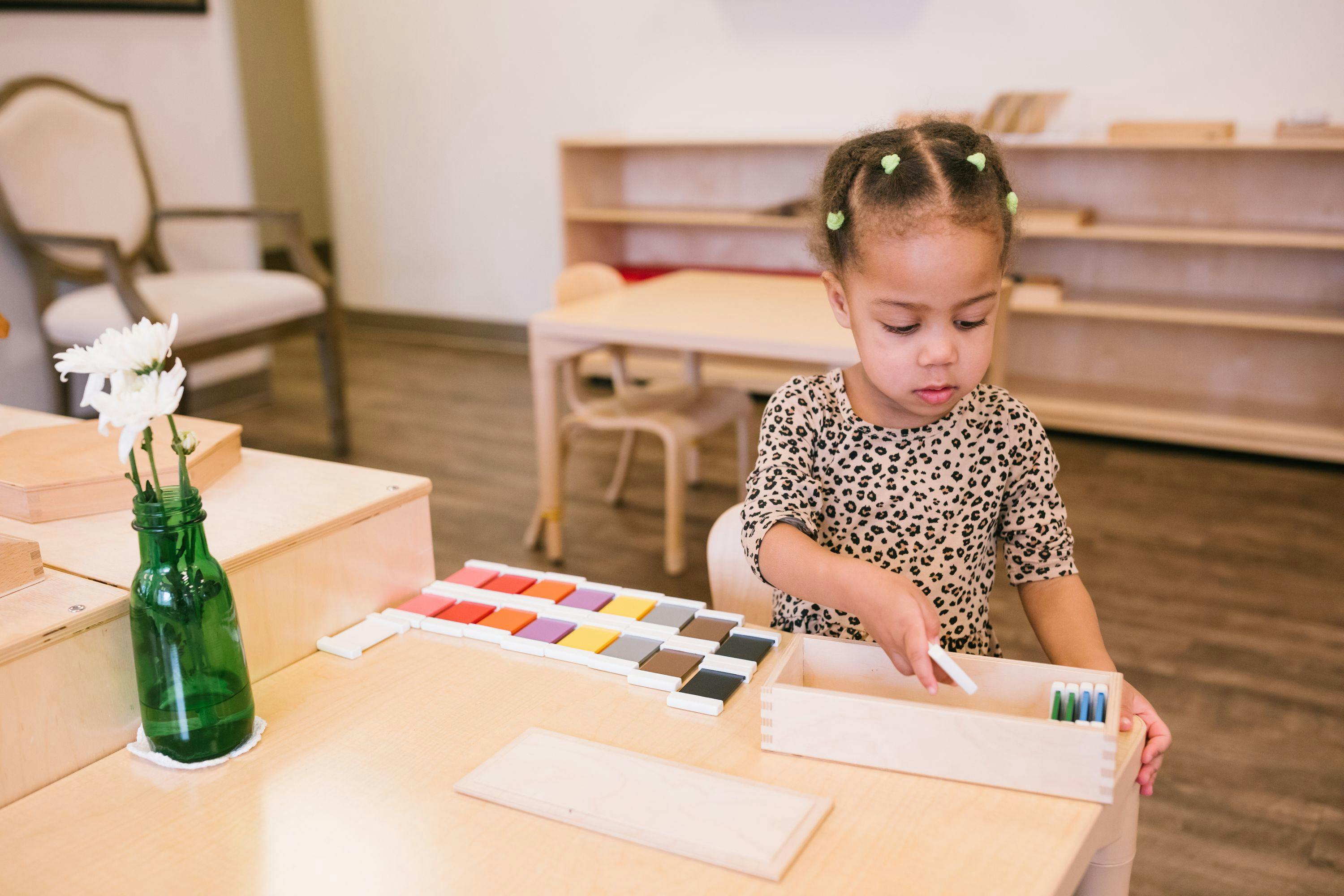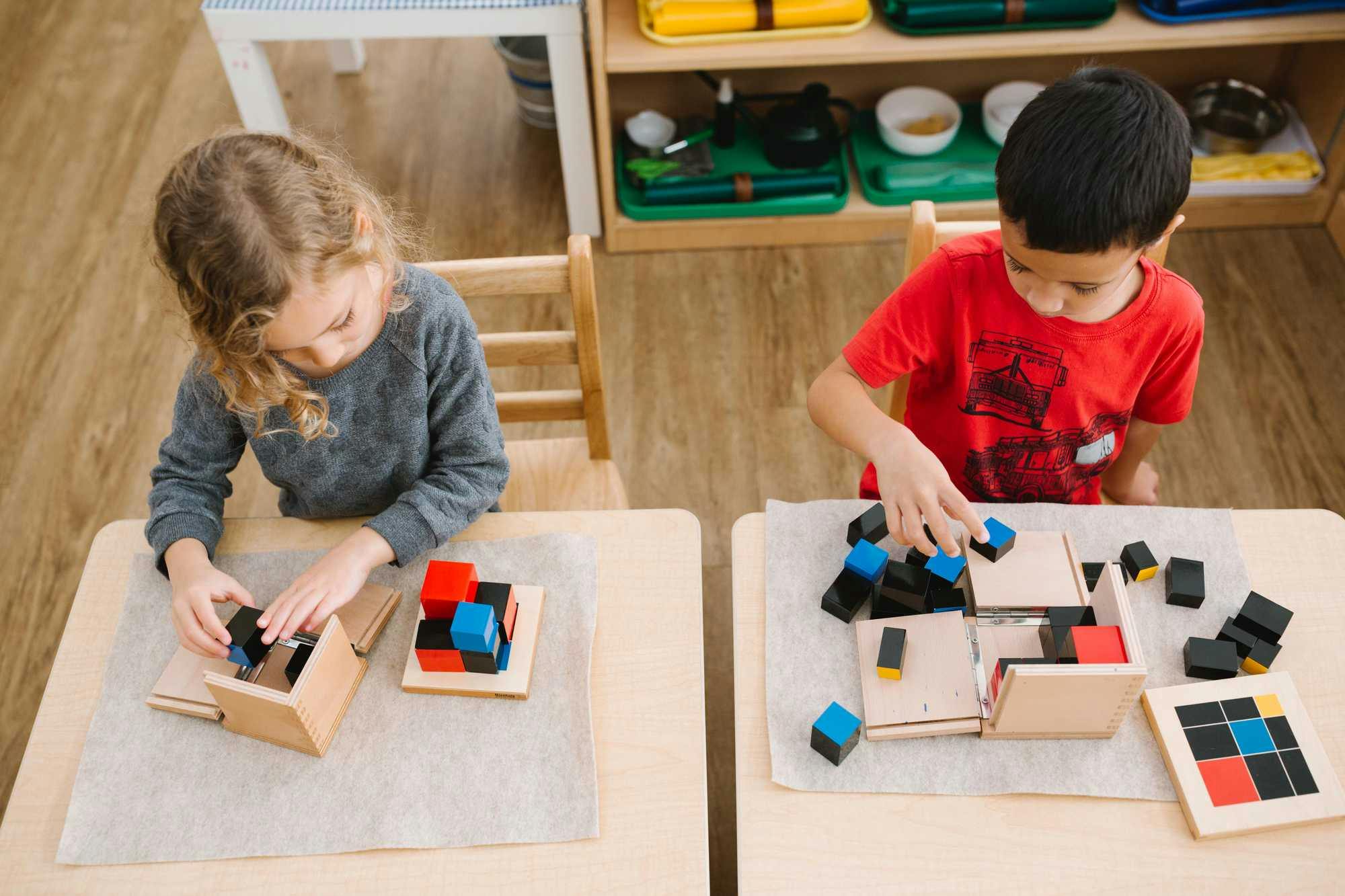What is Montessori?
An education for independence, self-confidence, and lifelong flourishing.
““Development takes the form of a drive toward an ever-greater independence. It is like an arrow released from the bow, which flies straight, swift and sure. The child’s conquest of independence begins with his first introduction to life. While he is developing, he perfects himself and overcomes every obstacle that he finds in his path.” ”
Maria MontessoriFounder of the Montessori Method of Education
who was maria montessori?.
Maria Montessori was an Italian doctor, educator, and philosopher who discovered a new method of education—one that doesn’t fight against the nature of children, but understands their needs, taps into their immense abilities, and empowers them to take charge of their life.
Montessori first gained fame when she taught 3 and 4-year-olds to read and write without painstaking drills or intensive instruction.
Over the course of her career, Montessori worked closely with children of all ages, carefully designed learning materials to support their growth while respecting their agency, and shared her landmark discoveries and innovations in her many books and lectures.
the montessori approach.
Children are born with limitless potential to grow, learn, and explore—to step-by-step build up their knowledge, hone their skills, and craft their character. The Montessori approach is based on a belief in the capability of children to do all the important, necessary work to realize that potential, as only they can.
With Montessori, we honor and support this work by offering children an endless set of meaningful choices and tools worthy of their effort. The goal is to observe children carefully, understand their needs, and then provide an environment that enables them to become increasingly independent—increasingly able to meet their own needs, form their own values, and author their own life.
Montessori offers children:
A carefully prepared environment
To foster the child’s burgeoning independence and self-confidence, the Montessori environment is designed to create an accessible world of order, beauty, and enriching values. This is a world where they can gradually learn to meet their own needs—to feed themselves, clean up after themselves, to trust themselves.
The Montessori environment features:
- A simplified, beautiful space for children to explore
- Child-sized furniture and tools
- Logically organized materials on accessible shelves
- Consistent routines and lessons in practical life skills and care of the class environment
Intentionally designed learning materials
To capitalize on the child’s longing to explore, learn, and perfect their abilities, a Montessori environment provides a sequence of captivating materials that systematically build on one another. These materials offer foundational learning experiences—in motor control, sensorial exploration, math, literacy, and so much more—and allow the child to joyously move from one achievement to the next.
Montessori learning materials:
- Captivate the child’s interest, optimizing for sustained concentration
- Isolate the difficulty of skills so the child can focus and master them one at a time
- Offer sensorial feedback so the child can self-correct
- Provide access to advanced curriculum years ahead of their peers in traditional schools
One-on-one guidance and support
To inspire children to connect with the environment and provided materials, Montessori guides (teachers) form personal connections with each child and observe closely in order to better understand their individual needs. Once the child is inspired to engage independently with a material, the guides give the child space to work and begin preparing for the next exciting step on the child’s path of achievement.
Montessori guides:
- Observe each child closely to understand their developmental progress and needs
- Offer one-on-one lessons to connect children with materials, build vocabulary, and assess their progress
- Create a classroom culture and environment that guards each child’s ability to concentrate
- Foster a supportive community of mixed-age peers that collaborates, inspires, and celebrates success together
The freedom to follow their own path
To account for the unique abilities and interests of every child and to cultivate their sense of agency and love of learning, a Montessori environment gives children tremendous liberty to take charge of their education. Children are free to choose their own materials, to set them up on a table or work mat, and to practice with them for 5 minutes or 3 hours—for as much time as they need to achieve mastery.
Children in a Montessori classroom:
- Move, explore, and collaborate freely with their classmates
- Direct their own path to mastery by concentrating on materials of their choice
- Refine their ability to exert effort, persist, and fix mistakes
- Cultivate an earned sense of self-confidence in their ability to make decisions
The result of a Montessori education is children who grow by their own effort. Children who genuinely experience success independently. Children who are joyously earning confidence. Children who know that they can do real things and engage in real learning. The result is children who confidently seek their own understanding of the world, create a character they can be proud of, and direct their lives on their individual path to success, happiness, and flourishing.
Ideas from the Guidepost Blog
Parenting tips, Montessori explainers and strategies for helping your child become an independent, capable human being — The Guidepost Team is here to help parents succeed

